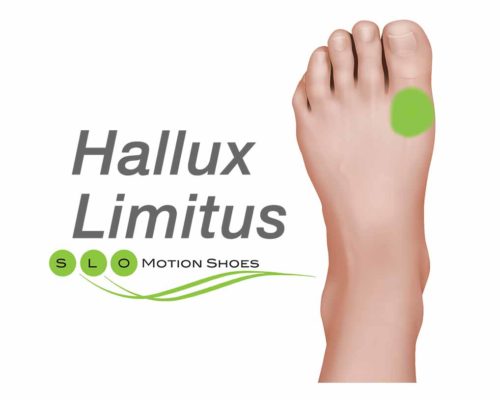Arthritis refers to limitation of motion or stiffness in a joint. Arthritis at the base of the big toe is the most common arthritic condition of the foot. This joint, called the metatarsophalangeal (MTP) joint, bends every time you take a step.

Symptoms
Pain at base of toe when taking a step
Swelling and stiffness around the joint
Inability to bend big toe up or down
A bump that develops on top of the foot
Causes
Abnormal foot anatomy
Prior injury to joint tissue
Wear-and-tear from abnormal foot pronation while walking
Treatments
See your doctor as soon as possible if experiencing symptoms. Hallux Rigidus is easier to treat when caught early. Treatment focus is on reducing pain and stiffness. Surgical options are available if conservative treatment is not effective.
Over the counter pain medication, such as ibuprofen (Advil, Motrin) or naproxen (Aleve), as needed
Ice or heat packs on the joint area
Cortisone injection into the joint
Avoid thin-soled or high heel shoes
Wider shoes with curved sole (rocker bottom)
Shoe inserts that limit motion at the joint
Customized orthotic to stabilize pronation (rolling inward)
Padding on orthotic arch support
The two most common conditions involving the big toe joint include Hallux Valgus ,or Bunion, and Hallux Rigidus, or Arthritis. To understand both of these conditions it is important to understand some of the mechanics of foot motion.
The first metatarsalphalangeal joint or “big toe joint” plays a very important role in our normal foot motion. The walking cycle gait has three distinct phases: heel contact, midstance and propulsion. The midstance phase is critical in positioning the foot in stable position just prior propulsion at heel lift. The active lifting of the heel off of the ground initiates the propulsive phase of walking. Excessive foot pronation or rolling-in increases the amount of stress on the big toe joint as the heel is lifted off of the gournd during propulsion. It is this abnormal stress on the big toe joint that can lead to the development of bunion and arthritis deformities.
Why an individual develops bunion deformity rather than arthritis in not fully understood. Differentiating these two conditions from each other is usually straight forward. In a bunion deformity the first metatarsal displaces toward the midline of the body and the big toe pushed into the second metatarsal causing a prominent “bump”. In arthritis there may be some deformity to the metatarsal bone but the toe position is generally straight and most importantly the big toe is “stiff”. Both of these conditions can occur simultaneously on both feet but most commonly will be seen on one.
Treatment for both of these conditions is very similar. Decreasing foot pronation at midstance with a supportive shoe and orthotic relieves stress on the big toe joint. Padding placed on the orthotic arch support can additionally relieve some of the stress on the big toe joint. Using a shoe with adequate width as well as a toe box region free of seems relieves the pressure on the big toe joint. For hallux rigidus a stiffer sole with a rocker sole construction decreases the bending stress on the joint.
Arthritis of Big Toe Joint (Hallux Rigidus) Discussion Board
Select a View
Click on the view that most represents the area of discomfort that you are experiencing. Drag your cursor over your area of concern to obtain a brief description of the potential condition.
Suggested Product
-

Reverse Morton Orthotic
$75.00Reduces the pressure over the sesamoid bones during walking.Select options







